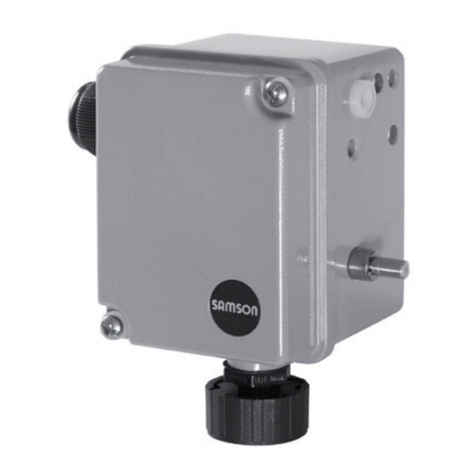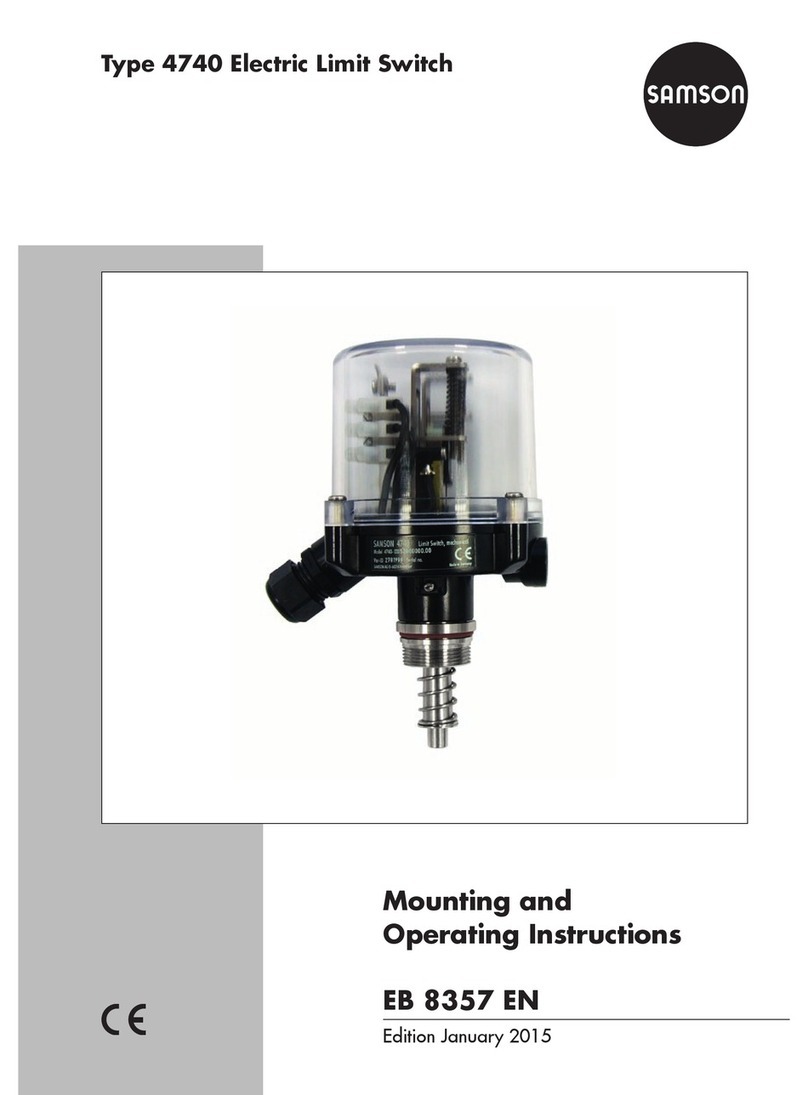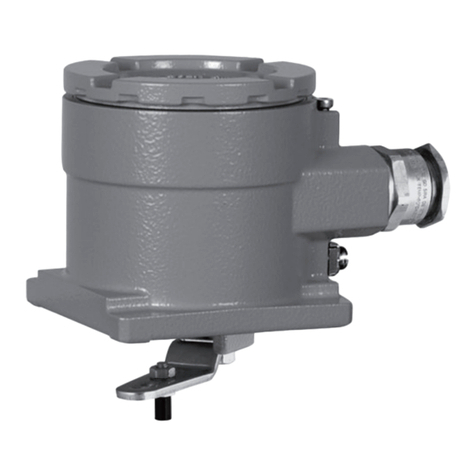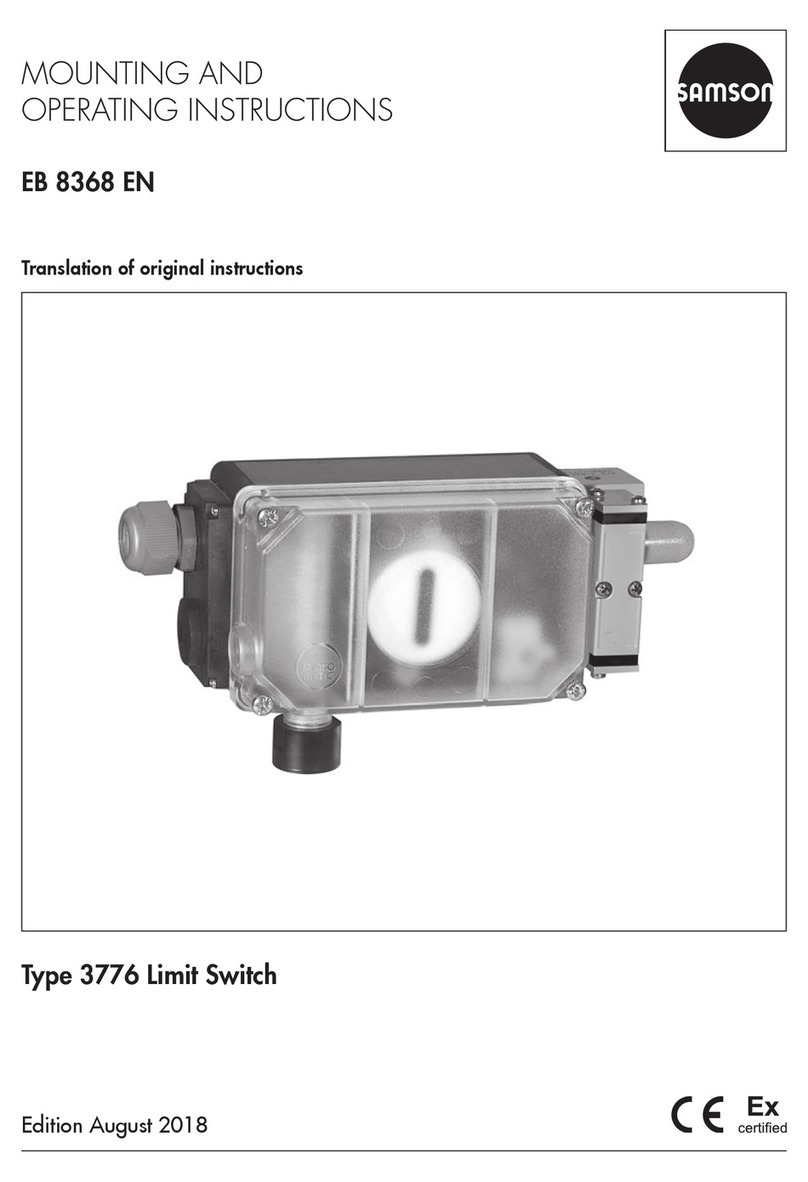6 EB 8365 EN
Design and principle of operation
2 Design and principle of oper-
ation
The limit switches are attached to pneumatic
control valves as well as to Type4765 and
Type4763 Positioners.
These limit switches have either inductive,
electric or pneumatic contacts. They issue a
signal when the valve travel exceeds or falls
below a limit, especially when a control
valve has reached its nal position. This sig-
nal is transmitted, e.g. to an alarm or indi-
cating system.
2.1 Principle of operation
The valve travel is transmitted either directly
to the pin (1.1) and lever (1) of the limit
switch by the plate (10) or by a coupling pin
when a positioner is attached. The linear
travel is converted into a rotary motion by
the shaft (2).
2.1.1 Type 4746-x Inductive
Limit Switch
In this version, the shaft (2) carries two
switch cases (3) with adjustable metal tags
(4.1) for non-contact activation of the inte-
grated proximity switches (5). For the opera-
tion of inductive limit switches (except for
Type4746-0281), appropriate switch ampli-
ers must be integrated into the output cir-
cuit.
The switching function and switching point
are continuously adjustable using the adjust-
ment screw (3.1).
2.1.2 Type 4746-x3 Electric
Limit Switch
In this version, the shaft (2) carries two
switch cases (3) with adjustable cam disks
(4.2). Each cam disk activates an electric
double-throw switch (7) over the roller (6.1),
which is attached to the switch lever (6). The
switching function and switching point are
continuously adjustable using the adjustment
screw (3.1).
2.1.3 Type 4746-04 Pneumatic
Limit Switch
In this version, the shaft (2) carries two
switch cases (3) with adjustable cam disks
(4.2). Each cam disk activates a nozzle/
apper system in the pneumatic switch (8).
Whenever the cam disk (4.2) activates the
switch lever (6) over the roller (6.1), the noz-
zle in the pneumatic switch (8) is opened
and the supply air from the microswitch (9)
is switched through to port A1or A2.
The nozzle is closed in the pneumatic switch
(8) and the supply air applied to the micro-
switch is cut off rst when the cam disk has
released the switch lever (6). As a result,
pressure is no longer applied to port A1or
A2.
The switching function and switching point
are continuously adjustable using the adjust-
ment screw (3.1).





































